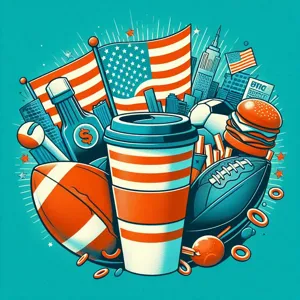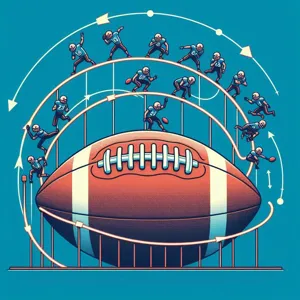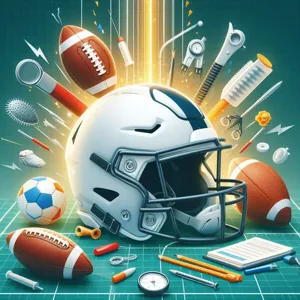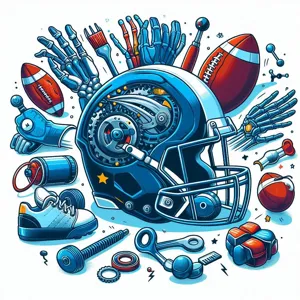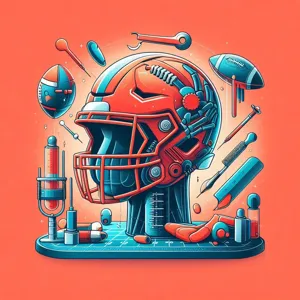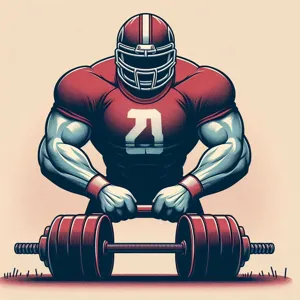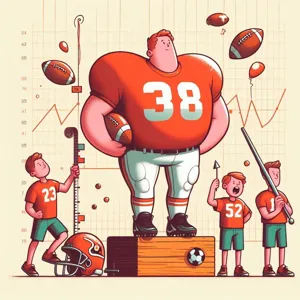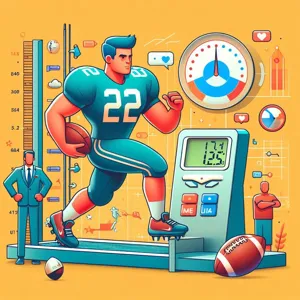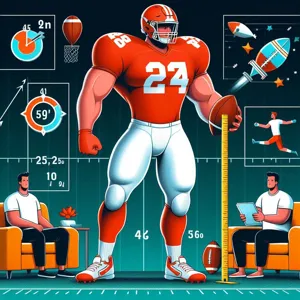Tennis is a sport that combines agility, strength, and precision, making it both exhilarating and physically demanding.
However, as players of all levels know too well, the fast-paced nature of the game can lead to a variety of injuries that might sideline even the most dedicated athletes. From sprained ankles to tennis elbow, understanding the common injuries associated with the sport is crucial for maintaining peak performance and longevity on the court. In this comprehensive guide, we’ll delve into the top tennis injuries and share essential prevention tips to help you stay in the game and enjoy every match pain-free. Whether you’re a seasoned pro or just picking up a racket for the first time, these insights will empower you to play smart, protect your body, and keep your love for tennis alive and thriving.
1. Introduction to Common Tennis Injuries

Tennis, a sport celebrated for its speed, agility, and strategic play, can unfortunately take a toll on the body. As players dart across the court, executing powerful serves and swift volleys, the risk of injury looms large. Whether you’re a seasoned pro or a weekend warrior, understanding the common injuries that can occur on the court is essential for maintaining your performance and passion for the game.
Injuries in tennis can vary from minor strains to significant tears, and they often affect key areas such as the shoulders, elbows, wrists, knees, and ankles. Among the most prevalent are tennis elbow—a painful condition resulting from repetitive arm motions—shoulder impingement, which can arise from overhead serves, and ankle sprains due to sudden lateral movements. Additionally, conditions like Achilles tendinitis and stress fractures can develop over time, especially if proper techniques and preventive measures are not followed.
Being aware of these injuries and their causes can empower players to take proactive steps in their training and gameplay. This not only enhances performance but also prolongs your time on the court, making it crucial to prioritize injury prevention. In the sections that follow, we will delve deeper into these common tennis injuries, explore their symptoms, and provide practical tips to help keep you in the game, ensuring that your love for tennis remains unscathed. Whether you’re aiming for a personal best or simply enjoying a friendly match, understanding how to protect your body is key to a long and fulfilling tennis journey.
2. Understanding the Anatomy of a Tennis Player
To effectively prevent injuries on the court, it’s essential to have a solid understanding of the anatomy of a tennis player. Tennis is a physically demanding sport that engages nearly every muscle group and joint in the body. From the explosive serves to the quick lateral movements, each action places unique stress on specific areas.
The primary muscle groups involved in tennis include the shoulders, arms, and legs. The shoulder complex, particularly the rotator cuff, is crucial for serving and overhead shots. These muscles must be strong and flexible to withstand the repetitive motions that can lead to strains or tears. Similarly, the forearm muscles are vital for grip strength and wrist stability, both essential for controlling your racket.
Moving down the body, the core muscles play a pivotal role in maintaining balance and generating power through your strokes. A strong core not only enhances performance but also protects the lower back, which is commonly injured due to the twisting movements involved in hitting forehands and backhands.
The lower body, especially the knees and ankles, bears the brunt of the quick starts and stops typical of a tennis match. Strong quadriceps and hamstrings can help stabilize the knee joint, while flexible calf muscles can prevent strains during sudden changes in direction.
By understanding how these various components work together, players can focus on strengthening and conditioning these areas through targeted exercises. Incorporating warm-up routines, flexibility training, and strength conditioning into your regimen can significantly reduce the risk of injury and keep you on the court longer. Ultimately, a deeper awareness of your own anatomy will empower you to take proactive steps toward injury prevention, ensuring that you remain competitive and enjoy the game you love.
3. Most Common Tennis Injuries: An Overview

Tennis, with its quick sprints, sharp pivots, and powerful strokes, is an exhilarating sport that can take a toll on the body. Understanding the most common injuries associated with tennis is crucial for any player aiming to stay in the game and maintain peak performance. Here’s an overview of the injuries you should watch out for:
1. **Tennis Elbow (Lateral Epicondylitis)**: This is perhaps the most well-known injury among tennis players. It occurs when the tendons in the elbow are overworked, leading to pain and inflammation. Symptoms often include pain on the outer part of the elbow, which can radiate down the forearm. It’s typically caused by repetitive arm motions, particularly from improper serving techniques or gripping the racket too tightly.
2. **Shoulder Injuries**: The shoulder is put under considerable strain during serves and overhead shots. Rotator cuff injuries and shoulder impingement are common issues that can arise from repetitive overhead motions. Players may experience pain, weakness, or limited range of motion, making it difficult to execute powerful shots.
3. **Wrist Sprains**: The wrist is heavily involved in various strokes, and improper technique or sudden movements can lead to sprains. Symptoms include swelling, pain, and difficulty in moving the wrist, which can sideline players if not addressed promptly.
4. **Ankle Sprains**: Quick lateral movements and sudden changes in direction can easily result in ankle sprains. These injuries can vary in severity, from mild strains to complete tears of the ligaments. Players may experience swelling, bruising, and difficulty bearing weight on the affected ankle.
5. **Knee Injuries**: The knees endure a lot of stress during matches, especially during lateral movements and abrupt stops. Conditions like patellar tendinitis (jumper’s knee) and meniscus tears are common. Symptoms can include pain in the kneecap area or a feeling of instability in the knee joint.
6. **Achilles Tendinitis**: The Achilles tendon connects the calf muscles to the heel and is crucial for explosive movements in tennis. Overuse can lead to tendinitis, characterized by pain and stiffness along the tendon, especially after activity.
Recognizing these common injuries is the first step in prevention. By understanding the demands tennis places on the body, players can take proactive measures—such as proper warm-ups, technique refinement, and strength training—to reduce their risk and keep their game on track. Remember, staying informed and taking care of your body is key to enjoying the sport you love for years to come.
– 3.1 Tennis Elbow
### 3.1 Tennis Elbow
Tennis elbow, or lateral epicondylitis, is one of the most common injuries among tennis players, and for good reason. This painful condition arises from repetitive motions, particularly the gripping and swinging actions that are integral to the sport. Over time, these repetitive movements can lead to microtears in the tendons that connect the forearm muscles to the outer elbow, resulting in inflammation and pain. Symptoms often include a dull ache on the outside of the elbow, stiffness, and discomfort when gripping objects or even shaking hands.
Preventing tennis elbow begins with proper technique. Ensuring that your strokes are executed correctly not only enhances your game but also reduces the strain on your elbow. Consider working with a coach to refine your form, especially if you’ve recently switched to a new racket or playing style. Additionally, using the right equipment is crucial. Opt for a racket with a larger grip size to alleviate excessive pressure on your forearm muscles, and select strings that offer a softer feel to minimize shock upon impact.
Warming up and cooling down effectively is another key aspect of prevention. Incorporate dynamic stretches for your arms and shoulders before hitting the court to prepare your muscles for action, and follow up with static stretches post-game to promote flexibility and recovery. Additionally, strengthening your forearm muscles with targeted exercises can provide more support to the elbow joint, reducing the likelihood of injury.
Lastly, listen to your body. If you start experiencing discomfort, don’t push through the pain. Instead, take a break, apply ice to the affected area, and consider consulting with a medical professional if the pain persists. By taking these preventative measures, you can keep tennis elbow at bay and enjoy many more hours of play without the fear of injury sidelining you.
– 3.2 Ankle Sprains

### 3.2 Ankle Sprains
Ankle sprains are among the most common injuries faced by tennis players, often occurring during quick lateral movements, sudden stops, or while changing direction. The fast-paced nature of the game places immense strain on the ankles, making them susceptible to awkward landings or missteps. When a player rolls or twists their ankle beyond its normal range of motion, ligaments can stretch or tear, resulting in pain, swelling, and instability.
Prevention is key to avoiding this painful setback. To safeguard your ankles, consider incorporating a few essential practices into your routine. First and foremost, proper footwear is crucial. Opt for tennis shoes that provide excellent support and cushioning, specifically designed to handle the lateral movements inherent in the sport. Ensure that they fit well and are suited to your playing surface—whether it’s clay, grass, or hard court.
Additionally, strengthening exercises for the ankle can help build resilience. Simple moves like calf raises, toe taps, and balance exercises on one leg can enhance stability and flexibility. Pay attention to your warm-up routine as well; dynamic stretches that target the calves, Achilles tendon, and surrounding muscles can significantly prepare your ankles for the demands of the game.
Lastly, consider using ankle braces or taping if you have a history of sprains or if you’re returning from an injury. These supportive measures can provide extra stability, allowing you to focus on your game without the fear of re-injury. By prioritizing ankle health, you’ll not only enhance your performance on the court but also keep yourself in the game for the long haul.
– 3.3 Shoulder Injuries
Shoulder injuries are among the most common and debilitating issues faced by tennis players, regardless of their skill level. The shoulder is a complex joint that plays a crucial role in almost every stroke, from serving to overhead smashes. The repetitive nature of these movements can lead to a range of injuries, including rotator cuff tendinitis, shoulder impingement, and even tears in the rotator cuff muscles.
The rotator cuff, a group of four muscles that stabilize the shoulder, is particularly susceptible to strain. When players perform overhead shots, the shoulder is subjected to extreme forces, making it vital to maintain strength and flexibility in this area. Poor technique, inadequate warm-ups, and lack of conditioning can exacerbate these risks, leading to discomfort and prolonged time away from the court.
To prevent shoulder injuries, players should focus on a few key strategies. First, incorporating a comprehensive warm-up routine that includes dynamic stretches and rotator cuff strengthening exercises can prepare the shoulder for the stresses of play. Additionally, players should pay attention to their serving technique; ensuring proper form not only enhances performance but also reduces the risk of injury.
Regular cross-training can also be beneficial. Engaging in activities that promote overall shoulder strength and flexibility, such as swimming or Pilates, can help support the muscles surrounding the shoulder joint. Moreover, listening to your body is crucial. If you experience pain or discomfort during play, it’s essential to take a break and seek professional advice. Early intervention can prevent minor issues from developing into more serious conditions that could sideline you for weeks or even months.
By being proactive about shoulder health, tennis players can enjoy the game they love while minimizing the risk of injury, ensuring they stay in the game for years to come.
– 3.4 Knee Injuries

Knee injuries are among the most common ailments faced by tennis players, often resulting from the sport’s high-impact nature and the rapid, lateral movements required on the court. These injuries can range from minor strains to severe ligament tears, and they can sideline players for weeks or even months if not properly managed. The knee is a complex joint, and the repetitive stress it endures during matches can lead to conditions like patellar tendinitis (often referred to as “jumper’s knee”) or meniscus tears, which can significantly impact a player’s performance and mobility.
To prevent knee injuries, it is essential to incorporate a combination of strength training, flexibility exercises, and proper warm-up routines into your regular practice. Focus on strengthening the muscles around the knee, including the quadriceps and hamstrings, to provide better support and stability. Exercises like lunges, leg presses, and squats can be beneficial. Additionally, incorporating agility drills into your training can help improve your footwork, enabling you to move more efficiently and reduce the risk of awkward landings that can stress the knee joint.
Equally important is the need for a thorough warm-up before hitting the court. Dynamic stretches, such as leg swings and walking lunges, can enhance blood flow to the muscles and prepare them for the demands of play. Pay attention to your body and listen for any discomfort; ignoring early signs of pain can lead to more severe injuries down the line.
Finally, consider the surface on which you play. Hard courts can be more taxing on the knees compared to softer surfaces like clay. If you find yourself frequently playing on hard courts, investing in quality footwear designed for shock absorption can help mitigate the impact on your knees. By prioritizing knee health through these preventive measures, you can enjoy the game you love while minimizing the risk of injury. Stay proactive, and keep your knees in top shape to ensure that you remain on the court, ready to serve up your best game.
– 3.5 Wrist Injuries
Wrist injuries are a common yet often overlooked concern for tennis players, both amateur and professional. The wrist plays a crucial role in nearly every stroke, from serves to volleys, making it susceptible to strain and injury. Such injuries can range from mild sprains to more severe conditions like tendinitis or even fractures, which can sideline a player for weeks or even months.
The repetitive motion of hitting the ball, combined with the quick, dynamic movements on the court, places significant stress on the wrist. Poor technique, inadequate warm-up, and the use of improper equipment can further increase the risk. For instance, a grip that’s either too large or too small can lead to excessive strain on the wrist, contributing to discomfort and injury.
To prevent wrist injuries, players should focus on several key strategies. First and foremost, proper warm-up and stretching routines are essential. Incorporating wrist-specific stretches, like wrist flexor and extensor stretches, can help enhance flexibility and reduce the risk of strain. Additionally, strengthening exercises targeting the forearm muscles can provide better support for the wrist during play.
Another crucial aspect is ensuring that your equipment is tailored to your needs. Selecting a racquet with the appropriate grip size and weight can mitigate stress on the wrist. Furthermore, working with a coach to refine your technique can help you develop a more efficient stroke that minimizes the risk of injury.
Ultimately, being proactive about wrist health not only keeps you in the game but enhances your overall performance on the court. Paying attention to these details can lead to a more enjoyable and injury-free tennis experience, allowing you to focus on what you love most: playing the game.
4. Risk Factors for Tennis Injuries
Understanding the risk factors for tennis injuries is crucial for players of all levels who wish to stay in the game and maintain peak performance. Several elements can heighten the likelihood of sustaining an injury, and being aware of them can help you take proactive measures to prevent setbacks.
**1. Player Experience and Skill Level:** Novice players often lack proper technique, making them more susceptible to injuries. Without the foundational skills to execute strokes and footwork correctly, beginners may unintentionally put excessive strain on their muscles and joints. Conversely, advanced players may push their limits, leading to overuse injuries if they fail to listen to their bodies.
**2. Physical Conditioning:** Tennis demands a unique combination of strength, flexibility, and endurance. Players who neglect their fitness routine or skip strength training may find themselves struggling to keep up with the sport’s physical demands. A lack of core stability or weak leg muscles can significantly increase the risk of injuries, particularly to the lower back, knees, and ankles.
**3. Court Surface:** The type of court surface plays a significant role in injury risk. Hard courts, for example, offer less shock absorption than clay or grass, resulting in greater impact on joints with every serve and volley. Players should be mindful of the surface they’re playing on and adjust their footwear and movement strategies accordingly.
**4. Equipment:** Using the wrong equipment can also contribute to the likelihood of injury. An inappropriate racquet size, weight, or string tension can lead to arm and shoulder problems over time. It’s essential to choose gear that fits your playing style and physicality, and to replace worn items like shoes that no longer provide adequate support.
**5. Playing Frequency:** Overtraining or playing too frequently without sufficient rest can lead to fatigue and increase the risk of injury. It’s vital to strike a balance between practice and recovery, allowing time for muscles to heal and strengthen between sessions.
By recognizing these risk factors, players can take crucial steps to mitigate them, such as investing time in proper training, maintaining fitness, choosing the right equipment, and understanding their physical limits. With the right approach, you’ll be better equipped to enjoy the game while minimizing the potential for injury, keeping you on the court and in the match.
5. Warm-Up and Stretching: Key to Injury Prevention
Warming up and stretching are often overlooked steps in a tennis player’s routine, yet they are critical components for injury prevention. Tennis is a high-intensity sport that demands agility, quick reflexes, and explosive movements, all of which can put significant strain on your muscles and joints. By incorporating a proper warm-up and stretching regimen into your practice, you can prepare your body for the physical demands of the game and significantly reduce the risk of injuries.
Start with a dynamic warm-up that elevates your heart rate and increases blood flow to your muscles. Activities like jogging, high knees, and lateral shuffles can get your body moving and ready for action. Aim for about 5-10 minutes of light aerobic activity to increase your core temperature, making your muscles more pliable and responsive.
Once you’re warmed up, transition into dynamic stretches that mimic the motions of tennis. Arm circles, leg swings, and trunk rotations can help enhance your range of motion and improve flexibility. Focus on the major muscle groups used in tennis, such as the shoulders, hips, and legs. This not only prepares your body for the lateral movements and quick stops that the game requires but also helps to activate the specific muscles you’ll rely on during play.
After your match or practice, don’t skip the cool-down. Engaging in static stretching can help to alleviate muscle tightness and promote recovery. Stretching major muscle groups like your hamstrings, quadriceps, and shoulders will aid in maintaining flexibility and reducing soreness. By committing to a consistent warm-up and stretching routine, you’ll enhance your performance and keep injuries at bay, ensuring you stay in the game longer and with greater ease.
6. Proper Technique: Reducing Strain on Your Body
Proper technique is crucial in tennis, not only for enhancing your performance but also for minimizing the risk of injury. When you strike the ball, your body engages in a complex series of movements that involve multiple muscle groups and joints. If these movements are executed incorrectly, they can lead to unnecessary strain and, ultimately, injuries.
To start, pay attention to your grip. A proper grip not only influences the angle and power of your shots but also helps distribute the forces exerted on your wrist and forearm. Ensure that your grip is neither too tight nor too loose, as this can lead to overuse injuries such as tennis elbow.
Next, focus on your footwork. Effective footwork is the foundation of good technique in tennis. Stay light on your feet and practice moving laterally and diagonally to get into the best position to hit the ball. This not only enables you to reach the ball more efficiently but also reduces the risk of twisting or awkward movements that can strain your knees or ankles.
When it comes to your swings, ensure that you maintain a fluid motion. Avoid swinging too hard or forcing your shots; instead, concentrate on proper body alignment and follow-through. A well-executed follow-through not only improves shot accuracy but also helps to dissipate the energy used during the swing, protecting your shoulders and back from injury.
Lastly, don’t underestimate the importance of warm-ups and cool-downs. Engaging in dynamic stretches before play can prepare your muscles for the demands of the game, while static stretches after play can aid in recovery and flexibility. By emphasizing proper technique and incorporating preventive measures, you can enjoy the game you love while keeping injuries at bay. Remember, a little focus on technique today can lead to a healthier, more enjoyable tennis experience tomorrow.
7. The Importance of Strength Training for Tennis Players
Strength training is a crucial element in the arsenal of any serious tennis player, and for good reason. Tennis is a sport that demands explosive power, agility, and endurance—all of which can be significantly enhanced through a well-structured strength training regimen. By focusing on building strength in key muscle groups, athletes can not only boost their on-court performance but also reduce the risk of common injuries that plague players.
The repetitive nature of tennis—serving, swinging, and sprinting—places immense stress on the body, particularly on the shoulders, wrists, and knees. Strength training helps in fortifying these areas, enabling players to better withstand the physical demands of the game. Exercises that target the core, for instance, are vital for providing stability and balance during play, allowing for more powerful strokes and improved footwork.
Incorporating a variety of resistance training exercises—such as squats, lunges, and shoulder presses—can enhance muscular endurance and promote proper biomechanics. This, in turn, contributes to more effective movements on the court and a reduced likelihood of injuries like rotator cuff tears or ankle sprains. Additionally, training the muscles used in tennis can lead to improved recovery times, allowing players to bounce back quicker after matches or intense practice sessions.
Beyond the physical benefits, strength training also fosters mental resilience. As players become stronger, they gain confidence in their abilities and a greater sense of control over their bodies. This mental edge can make a significant difference during high-pressure moments in matches.
In essence, strength training is not merely an ancillary activity for tennis players; it is an essential component of a comprehensive training program. By prioritizing strength training, players can protect themselves from injuries, enhance their performance, and ensure they stay in the game longer. Whether you’re a seasoned athlete or a budding enthusiast, incorporating strength training into your routine can be the key to unlocking your full tennis potential.
8. Choosing the Right Equipment: Rackets, Shoes, and More
When it comes to preventing injuries on the tennis court, one of the most crucial factors is selecting the right equipment. The right racket, shoes, and accessories can make a significant difference in your performance and overall safety during matches and practice sessions.
### Rackets: Finding Your Perfect Match
Choosing a racket that fits your playing style is essential. Rackets come in various sizes, weights, and materials, all of which can influence your technique and comfort level. A racket that is too heavy can lead to fatigue and strain on your arm, while one that is too light may not provide the stability you need. Look for rackets that offer a good balance of power and control, and consider testing several options to find the one that feels right in your hands. Additionally, don’t overlook string tension and grip size—both play a vital role in your overall performance and injury prevention.
### Shoes: The Foundation of Your Game
Tennis shoes are specifically designed to support lateral movement and quick directional changes, which are integral to the sport. Investing in a good pair of tennis shoes can help minimize the risk of ankle sprains and foot injuries. Look for shoes that offer adequate cushioning and support, particularly in the arch and heel. Consider the type of court you play on—clay, hard, or grass—as different surfaces may require specialized footwear. Proper fit is also critical; shoes that are too tight or too loose can lead to blisters or other discomforts that could sideline you from play.
### Accessories: Don’t Overlook the Details
Don’t forget about the smaller accessories that can enhance your game and protect you from injury. A good pair of moisture-wicking socks can prevent blisters, while supportive wristbands can help stabilize your wrists during play. Also, consider using elbow and knee braces if you have a history of joint pain; these can provide additional support and help you play with confidence.
Ultimately, choosing the right equipment is about more than just performance; it’s about ensuring you stay healthy and injury-free so you can enjoy the game you love for years to come. By investing time and resources into selecting the gear that suits you best, you’ll be setting yourself up for success on the court.
9. Recovery Strategies: Listening to Your Body
When it comes to preventing injuries and ensuring longevity in the game of tennis, one of the most crucial strategies is learning to listen to your body. Tennis can be a physically demanding sport, and while the adrenaline of a match might urge you to push through pain or fatigue, ignoring these signals can lead to serious setbacks. Recovery isn’t just about resting after a match; it’s about being attuned to your body’s needs and responding appropriately.
Recognizing the signs of overexertion—such as persistent soreness, unusual fatigue, or joint discomfort—is vital. If you feel that your body is telling you to slow down, heed that warning. Incorporating adequate rest days into your training regimen allows your muscles and joints to recover, rebuilding their strength and flexibility. Listen to your body and take breaks when necessary, even if it means missing a practice or two.
Moreover, integrating active recovery techniques can significantly enhance your recovery process. Gentle activities like yoga, swimming, or cycling can promote blood circulation and help alleviate muscle stiffness, all while keeping you active. Stretching and foam rolling are also essential components of recovery; they can improve flexibility and reduce tightness, ultimately preparing your body for the next challenge on the court.
Hydration and nutrition play pivotal roles in how well your body recovers, too. Ensuring you are properly hydrated before, during, and after matches will help prevent cramps and fatigue. Similarly, consuming a balanced diet rich in proteins, carbohydrates, and healthy fats will provide your muscles with the nutrients they need to repair and grow.
Lastly, consider incorporating professional guidance into your routine. Working with a physiotherapist or a sports trainer can help you develop a personalized recovery plan tailored to your specific needs and experiences. They can provide expert insight into injury prevention strategies and recovery techniques, ensuring that you stay in the game for the long haul.
By learning to listen to your body and implementing these recovery strategies, you can not only enhance your performance but also protect yourself from injuries, allowing you to enjoy the game you love for years to come.
10. Hydration and Nutrition: Fueling Your Performance
Hydration and nutrition are often the unsung heroes of athletic performance, yet they play a crucial role in keeping tennis players on the court and free from injury. Your body is a finely-tuned machine, and just like any high-performance vehicle, it requires the right fuel to operate efficiently. Tennis is a physically demanding sport that involves quick movements, explosive power, and endurance, making proper hydration and nutrition vital for optimal performance.
When it comes to hydration, staying ahead of the game is key. Dehydration can lead to decreased coordination, muscle cramps, and fatigue—factors that can significantly hinder your play and increase your risk of injury. It’s essential to drink water consistently throughout the day, not just during matches or practice sessions. Consider incorporating electrolyte-rich drinks, especially during long sessions or in hot weather, to replenish lost minerals and maintain optimal fluid balance.
Nutrition, on the other hand, sets the foundation for your energy levels and recovery. A well-balanced diet rich in complex carbohydrates, lean proteins, and healthy fats will provide the necessary energy to keep you moving on the court. Carbohydrates serve as your primary energy source, fueling those quick sprints and powerful serves. Foods like whole grains, fruits, and vegetables should be staples in your diet. Lean proteins, such as chicken, fish, and legumes, aid in muscle repair and recovery, while healthy fats from sources like avocados and nuts can provide sustained energy over time.
Timing also matters. Eating a well-balanced meal a few hours before your match can set you up for success, while a light snack—such as a banana or an energy bar—30 minutes prior can provide that extra boost when you need it most. Post-match nutrition is equally important; consuming a mix of protein and carbohydrates within 30 minutes of finishing can help speed up recovery and replenish energy stores.
By prioritizing hydration and nutrition, you not only enhance your performance on the court but also significantly lower your risk of injuries. Remember, every ace you serve and every volley you make relies on the fuel you provide your body. So, equip yourself with the right hydration and nutrition strategies to keep you in the game, fit, and ready to conquer the next match.
11. Cross-Training: Benefits for Tennis Players
Cross-training is a powerful tool for tennis players looking to enhance their performance while minimizing the risk of injuries. Engaging in a variety of physical activities outside of tennis not only improves overall fitness but also helps to develop different muscle groups, increase flexibility, and enhance coordination. By diversifying your training regimen, you can address the specific demands of tennis—quick lateral movements, explosive sprints, and sustained endurance—while giving certain muscles a break from the repetitive motions of the sport.
For instance, incorporating activities like swimming can provide a low-impact workout that strengthens your cardiovascular system and builds endurance without putting undue stress on your joints. Strength training, particularly focused on the core, legs, and shoulders, can improve your power and stability on the court, which is crucial for executing powerful serves and swift returns. Yoga and Pilates are also excellent for enhancing flexibility and balance, essential components for a successful tennis game.
Moreover, cross-training can help prevent overuse injuries by allowing you to engage different muscle groups and reduce the strain on areas commonly affected by tennis, such as the elbows, shoulders, and knees. By mixing up your workouts, you not only keep your training routine exciting, but you also create a more resilient body that can withstand the physical demands of tennis. Remember, the key to a long and fruitful tennis career lies in a well-rounded approach to fitness—so embrace cross-training and keep yourself in the game for years to come!
12. Recognizing the Signs of Injury Early
Recognizing the signs of injury early is crucial in tennis, where the fast-paced nature of the game can put immense strain on the body. As athletes, we often push ourselves to the limit, driven by the thrill of competition and the desire to improve. However, the key to a long and successful tennis career lies in our ability to listen to our bodies and heed their warnings.
The initial signs of a potential injury can often be subtle—perhaps a slight twinge in your shoulder during a serve or a dull ache in your knee after a particularly intense rally. These early indicators can easily be dismissed as mere fatigue or normal wear and tear, but ignoring them can lead to more serious injuries down the line. Common early signs include swelling, tenderness, stiffness, and a loss of range of motion. If you find that you’re favoring one side of your body or adjusting your technique to avoid discomfort, it’s time to take notice.
Implementing preventive strategies is essential when you begin to recognize these signs. Stretching and warm-up routines should be a staple in your practice, helping to prepare your muscles and joints for the demands of the game. Additionally, paying attention to recovery, such as rest days and proper nutrition, can greatly reduce the risk of injury. If you’re experiencing persistent discomfort, consider consulting a physical therapist or sports medicine specialist who can provide tailored exercises and advice.
By being proactive and aware of your body’s signals, you can catch potential injuries before they sideline you. Remember, the goal is not just to play but to play well and for as long as possible. Being attuned to your body’s needs will ensure that you remain in the game, enjoying every match and every point without the shadow of injury looming over you.
13. When to Seek Professional Help
Knowing when to seek professional help is crucial in preventing minor injuries from spiraling into serious issues that could sideline you for an extended period. If you experience persistent pain, swelling, or discomfort that does not improve with rest, ice, compression, or elevation (the RICE method), it’s a clear signal that you should consult a healthcare professional.
Pay attention to any symptoms that seem unusual for your typical aches and pains—such as sharp or radiating pain, difficulty moving a joint, or instability that wasn’t previously there. These could indicate a more serious injury, like a tear or a fracture, which requires expert evaluation and treatment.
Additionally, if you find yourself adjusting your playing style to avoid pain, it’s time to speak with a physical therapist or sports medicine specialist. This could be a sign of an underlying biomechanical issue that needs addressing before it leads to further injury. Early intervention can make all the difference, allowing you to return to the court sooner, often with enhanced strength and resilience.
Remember, prioritizing your health is just as important as perfecting your serve or backhand; a proactive approach not only keeps you playing but also ensures you enjoy the sport you love for years to come. Don’t hesitate to seek help—your body will thank you!
14. Conclusion: Staying Healthy and Enjoying the Game
In conclusion, prioritizing your health is essential to enjoying the sport you love. Tennis is a challenging and exhilarating game, but it can also take a toll on your body if you’re not careful. By understanding the common injuries that plague players, from tennis elbow to ankle sprains, you can take proactive steps to prevent them.
Incorporate a consistent warm-up and cool-down routine into your practice sessions to prepare your muscles for the intensity of play and to aid in recovery afterward. Strength training and flexibility exercises are invaluable allies, as they enhance your overall performance while fortifying your body against injuries.
Don’t underestimate the importance of proper equipment; investing in well-fitted shoes and a suitable racquet can make a world of difference. Moreover, pay attention to your body’s signals—if you’re feeling pain or discomfort, don’t push through it. Rest and recovery are just as crucial as practice for maintaining your health and longevity in the game.
By adopting these injury prevention strategies, you can safeguard your body and extend your tennis career, allowing you to enjoy the thrill of the game for many years to come. Remember, the goal is not just to play, but to thrive on the court while minimizing the risk of injury. So lace up your shoes, grab your racquet, and keep swinging with confidence—your body will thank you!
15. Additional Resources for Tennis Injury Prevention
When it comes to staying injury-free on the tennis court, knowledge is your best ally. Fortunately, there are a wealth of additional resources available that can help you deepen your understanding of injury prevention techniques and enhance your performance.
Firstly, consider exploring reputable websites dedicated to sports medicine and tennis training. Websites like the American Orthopaedic Society for Sports Medicine (AOSSM) and the United States Tennis Association (USTA) offer a treasure trove of articles, videos, and guidelines that discuss common tennis injuries, their causes, and prevention strategies. These resources often feature expert insights from physiotherapists and trainers who specialize in sports injuries, ensuring that the information is both accurate and practical.
Additionally, books and e-books written by tennis coaches and athletic trainers can provide in-depth knowledge on conditioning, biomechanics, and injury prevention specifically tailored for tennis players. Look for titles that focus on strength training, flexibility, and sport-specific warm-up routines.
Online platforms like YouTube also serve as excellent resources for visual learners. You can find instructional videos that demonstrate proper stretching techniques, strength exercises, and on-court drills designed to enhance your agility while minimizing injury risk. Follow channels that are run by certified trainers or professional players, as they often share their personal tips and experiences.
Finally, don’t underestimate the value of community. Joining local tennis clubs or online forums can connect you with other players who share their experiences and advice on injury prevention. Participating in workshops or clinics led by professional coaches can also provide hands-on training and personalized guidance on maintaining optimal physical health while enjoying the game.
By taking advantage of these additional resources, you can significantly bolster your knowledge and skills, ensuring that you remain not only a formidable competitor on the court but also a resilient one, ready to face the challenges of the game without the setback of injuries.
As we wrap up our exploration of the top tennis injuries and their prevention tips, it’s clear that staying in the game requires more than just skill and determination; it demands a proactive approach to your health and well-being. By incorporating the strategies we’ve discussed—from proper warm-ups and cool-downs to strengthening exercises and mindful recovery techniques—you can significantly reduce your risk of injury and enjoy the sport you love for years to come. Remember, a strong player is not just one who excels on the court but one who knows how to take care of their body. We hope this guide empowers you to play smarter, stay safe, and keep your passion for tennis alive. Here’s to many injury-free matches ahead—see you on the court!


